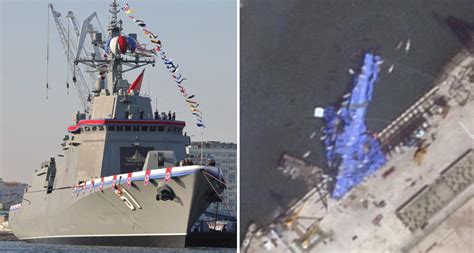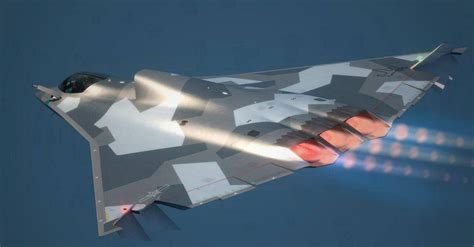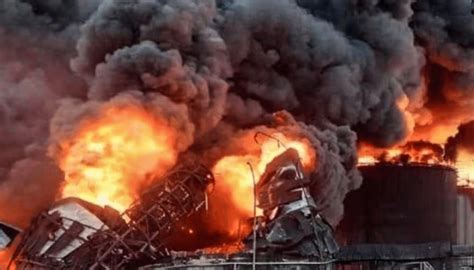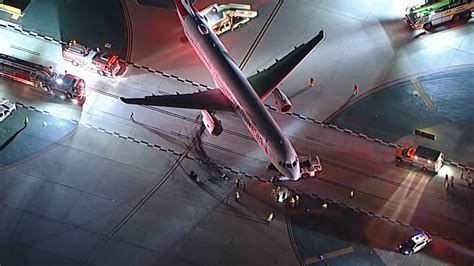
Four North Korean officials are reportedly facing severe punishment, possibly death, following the unsuccessful launch of a new destroyer, according to a South Korean media outlet.
The officials, whose identities have not been publicly released, were arrested after the launch of what was believed to be North Korea’s first domestically built destroyer ended in failure. South Korea’s JoongAng Ilbo newspaper reported the arrests, citing multiple sources familiar with the matter. The incident has triggered significant repercussions within the North Korean regime, known for its strict accountability measures.
The ill-fated launch is a significant setback for Kim Jong-un’s ambitions to modernize the North Korean navy. The failed destroyer was intended to bolster the country’s maritime capabilities amid rising tensions in the region. The arrests highlight the high stakes involved in North Korea’s military advancements and the potential consequences for those deemed responsible for failures.
According to sources cited by JoongAng Ilbo, the North Korean leader, Kim Jong-un, has expressed considerable displeasure over the botched launch. The officials arrested were reportedly key figures involved in the destroyer’s development and launch process. Their arrest underscores the regime’s zero-tolerance policy for failures, especially in areas crucial to national security and military strength.
The failed launch also raises questions about the technological capabilities of North Korea’s defense industry. While the country has made strides in developing nuclear weapons and ballistic missiles, naval technology appears to lag behind. This discrepancy could hinder North Korea’s ability to project power in the surrounding waters and potentially impact its strategic position in the region.
The arrests and potential executions also reflect the internal dynamics of the North Korean government. Such drastic measures serve as a warning to other officials and reinforce the importance of absolute loyalty and competence. The incident may also lead to a reshuffling of personnel in the military and defense sectors as Kim Jong-un seeks to rectify the issues that led to the launch failure.
Details of the Failed Launch and Subsequent Arrests
The report from JoongAng Ilbo provides a grim account of the aftermath of the failed destroyer launch. The officials arrested were reportedly deeply involved in overseeing the project from its inception to the final stages of preparation for the launch.
“The arrests signal a severe response from Kim Jong-un, who views such failures as direct challenges to his authority and the nation’s prestige,” one source told the newspaper. The report noted that the exact reasons for the launch failure remain unclear, but initial assessments point to technical malfunctions and potential design flaws in the destroyer.
The vessel, which was intended to be a symbol of North Korea’s growing naval power, was equipped with advanced radar systems and missile launch capabilities, according to preliminary reports. However, these systems seemingly failed to function correctly during the launch, leading to the embarrassing outcome.
The South Korean media also indicated that the arrested officials are facing charges related to negligence, incompetence, and potentially even sabotage. The North Korean regime often uses such charges to justify harsh punishments, including execution, particularly in cases involving high-profile military failures.
The arrests have created an atmosphere of fear and uncertainty within the North Korean military and defense establishment. Other officials involved in similar projects are now under increased scrutiny, and many fear being held accountable for any future setbacks.
Implications for North Korea’s Military Modernization
The failed destroyer launch and subsequent arrests could have far-reaching implications for North Korea’s broader military modernization efforts. Kim Jong-un has repeatedly emphasized the importance of strengthening the country’s armed forces to counter perceived threats from the United States and its allies.
The modernization of the navy is a key component of this strategy, as North Korea seeks to enhance its ability to patrol its territorial waters and project power beyond its borders. However, the failed launch underscores the challenges North Korea faces in acquiring and mastering advanced naval technologies.
The incident may also prompt a reassessment of North Korea’s defense priorities. While the country has invested heavily in developing nuclear weapons and ballistic missiles, it may need to allocate more resources to improve its conventional military capabilities, including naval power.
Furthermore, the arrests could lead to a slowdown in North Korea’s military modernization efforts, as officials become more cautious and risk-averse in their decision-making. The fear of being held accountable for failures may stifle innovation and experimentation, hindering the development of new weapons systems and technologies.
Regional and International Context
The failed destroyer launch and the subsequent purges come at a time of heightened tensions in the Korean Peninsula. North Korea has conducted numerous missile tests in recent months, defying international sanctions and raising concerns about its nuclear ambitions.
The United States and its allies, including South Korea and Japan, have responded by increasing their military presence in the region and conducting joint military exercises. These actions have further escalated tensions and heightened the risk of miscalculation or confrontation.
The failed destroyer launch may embolden North Korea’s adversaries, who may view it as evidence of the country’s technological weaknesses. However, it could also prompt North Korea to become even more aggressive in its pursuit of military advancements, as it seeks to prove its strength and resolve.
The international community has condemned North Korea’s military provocations and called on the country to abandon its nuclear weapons program and engage in dialogue. However, North Korea has so far refused to comply, and the prospects for a diplomatic resolution remain uncertain.
Historical Precedents and Internal Power Dynamics
The harsh punishment of officials following military failures is not unprecedented in North Korea. The regime has a long history of holding individuals accountable for perceived shortcomings, often in a brutal and public manner.
Such actions serve multiple purposes. They reinforce the authority of the leader, deter dissent, and maintain a climate of fear and obedience. They also provide a scapegoat for failures, allowing the regime to deflect blame and maintain its image of strength and competence.
In the past, high-ranking officials have been executed or purged for a variety of reasons, including political disloyalty, economic mismanagement, and military incompetence. These purges often result in a reshuffling of personnel and a consolidation of power in the hands of the leader and his closest allies.
The current situation reflects these historical patterns and underscores the importance of understanding the internal power dynamics of the North Korean regime. Kim Jong-un has demonstrated a willingness to use extreme measures to maintain his grip on power and enforce his will.
Analysis of North Korea’s Naval Capabilities
Despite its aggressive rhetoric and pursuit of nuclear weapons, North Korea’s naval capabilities remain relatively limited compared to those of its neighbors and adversaries. The country’s navy primarily consists of small patrol boats, submarines, and missile boats, many of which are outdated and technologically inferior.
North Korea has made some efforts to modernize its navy, but these efforts have been hampered by economic constraints, technological limitations, and international sanctions. The failed destroyer launch highlights the challenges North Korea faces in developing advanced naval vessels and integrating sophisticated weapons systems.
The country’s submarine fleet is one of its most significant naval assets, but it is largely composed of aging diesel-electric submarines that are vulnerable to detection by modern anti-submarine warfare systems. North Korea has also been developing ballistic missile submarines, but these efforts have faced technical challenges and international scrutiny.
The failed destroyer launch is a setback for North Korea’s naval modernization efforts, but it is unlikely to deter the country from continuing to pursue its military ambitions. North Korea may seek to acquire naval technology from foreign sources, or it may focus on developing asymmetric capabilities, such as anti-ship missiles and underwater drones, to counter the superior naval power of its adversaries.
The Future of North Korea’s Military Programs
The incident involving the failed destroyer launch raises questions about the future of North Korea’s military programs. While the country has achieved significant progress in developing nuclear weapons and ballistic missiles, its conventional military capabilities appear to lag behind.
The failed launch may prompt North Korea to re-evaluate its defense priorities and allocate more resources to improving its conventional forces. However, the country’s economic constraints and technological limitations may limit its ability to make significant advancements in this area.
North Korea may also seek to enhance its military capabilities through unconventional means, such as cyber warfare and electronic warfare. These capabilities could allow North Korea to disrupt its adversaries’ command and control systems, gather intelligence, and conduct sabotage operations.
The future of North Korea’s military programs will depend on a variety of factors, including the country’s economic situation, its relations with other countries, and the political dynamics within the regime. However, it is clear that North Korea remains committed to strengthening its armed forces and deterring perceived threats to its security.
Political Repercussions and Internal Stability
The failed launch and subsequent arrests have significant political repercussions within North Korea. Publicly admitting such a failure is a rare occurrence and underscores the severity of the situation. Kim Jong-un’s response suggests a high degree of concern over the potential impact on his leadership and the regime’s stability.
The arrests serve as a warning to other officials, reinforcing the importance of loyalty and competence. This could lead to a period of increased fear and self-censorship within the government and military, potentially stifling innovation and critical thinking.
However, the situation also presents an opportunity for Kim Jong-un to consolidate his power. By publicly punishing those responsible for the failure, he can demonstrate his resolve and strengthen his control over the military and government.
The long-term impact on North Korea’s internal stability will depend on how Kim Jong-un manages the situation. If he is able to effectively address the underlying issues that led to the failure and maintain the support of key elites, he may be able to weather the storm. However, if the situation is mishandled, it could lead to further instability and potentially even challenges to his leadership.
FAQ on the North Korean Destroyer Launch Failure and Arrests
1. What exactly happened with the North Korean destroyer launch?
The launch of North Korea’s new domestically built destroyer failed. While specific details are scarce, it is understood that the vessel encountered significant technical problems during the launch phase, rendering the mission unsuccessful. The exact nature of the failure remains unconfirmed, but sources point to malfunctions and design flaws.
2. Why were North Korean officials arrested after the failed launch?
Four key officials involved in the destroyer’s development and launch were arrested following the failure. The arrests are believed to be a consequence of Kim Jong-un’s strict accountability measures and zero-tolerance policy for failures, especially in critical military projects. They are potentially facing charges related to negligence, incompetence, or even sabotage.
3. What does this incident mean for North Korea’s military modernization efforts?
The failed launch is a major setback for North Korea’s naval modernization program. It highlights the challenges the country faces in mastering advanced naval technologies, potentially hindering its ability to project power in the region. The incident may also prompt a reassessment of defense priorities and a reallocation of resources to address weaknesses in conventional military capabilities.
4. Could the arrested officials face execution?
While the exact punishments are unknown, there is a significant possibility the arrested officials could face execution. North Korea has a history of harshly punishing individuals deemed responsible for failures, particularly in high-profile military projects. Execution, imprisonment, or demotion to labor camps are all possible outcomes, depending on the severity of the perceived offense.
5. How will this affect the stability of Kim Jong-un’s regime?
The failed launch and subsequent arrests could have a mixed impact on Kim Jong-un’s regime. On one hand, it highlights potential weaknesses and technological limitations. On the other hand, it provides an opportunity for Kim Jong-un to consolidate power by demonstrating his resolve and punishing those deemed responsible. The long-term impact will depend on how the situation is managed, and whether Kim can address the underlying issues and maintain the support of key elites. The situation may lead to instability and challenges if mishandled.









